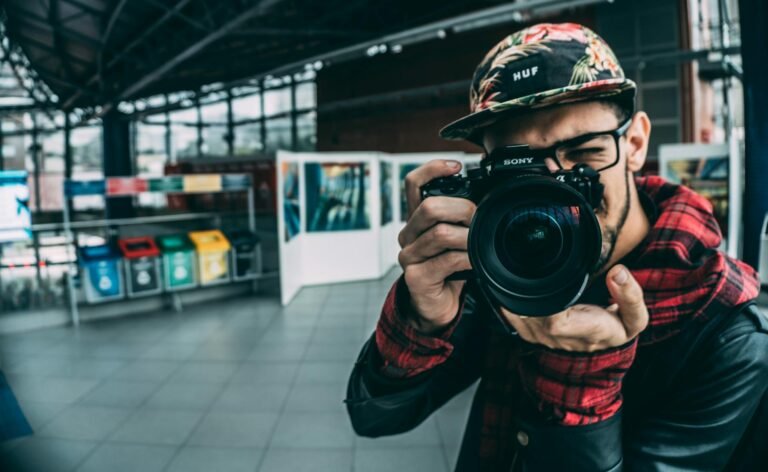Photographe professionnel is the term used to describe professional photographers who use their talents, creativity, and technical expertise in capturing images to tell stories, evoke emotions, and preserve memories. Today, the role of a professional photographer is perhaps the most diverse ever: portrait photography to commercial shoots, weddings, fashion, and more. This article explores the world of professional photography-from tools and techniques required to become an expert to multiple career paths available in the field.
What does it mean to be a Photographe Professionnel?
A professional photographe is one who has brought his or her skills to a very high level of expertise, usually through formal education, years of practice, and a deep understanding of the art and science behind photography. A photographe professionnel is unlike a hobbyist or an amateur in that he or she is paid for work and is expected to deliver results that meet the needs and expectations of his or her clients.
Being a professional photographer is not merely about knowing how to use a camera. It involves the knowledge of light, composition, color theory, and technical aspects of photography such as aperture, shutter speed, and ISO. A professional photographer must also have an eye for detail, creativity, and an ability to work under pressure to deliver images that tell a compelling story or meet specific commercial needs.
The Core Skills of a Professionnal Photographe
-
Technical Skills
The technical competence is one of the foundational aspects of the professional photographer. The photographe professionnel knows how to handle numerous equipment and tools: the camera, lenses, lighting, and post-processing software.
Camera Settings: It is of fundamental importance to know how to control the exposure settings-aperture, shutter speed, and ISO-to capture that one ideal shot under various lightings.
Composition: For a professional photographer, understanding the rules of composition are of great importance-includes the rule of thirds, leading lines, framing, and balance-for captivating photography.
Lighting: Be it the natural light or using a studio lighting setup, the professional photographer will know exactly how to manipulate light to give attention to the subject matter or create mood or drama in the photos.
2. Creativity and Artistic Vision
After mastering technical skills, a true professional photographer has creativity as well as an artistic sense. A professional photographer cannot be just the one getting technically perfect shots; but rather, a photographer to tell a story with each image, bring about certain emotions, or freeze some moment in life to elicit a certain reaction by the viewer.
Framing and Perspective: A good photographer may make the same ordinary scene a breathtaking picture by changing the angle or perspective from which it is shot.
Post-processing: Post-processing or photo editing enables professional photographers to make changes to images in various ways, correct color aberrations, remove imperfections, and add some creative artistic flair. Many such changes are made through use of software like Adobe Lightroom and Photoshop.
At its core, photography is a service profession. It may be with an individual, family, business, or large organization where a professional photographer has to learn to communicate effectively with his clients to understand what their requirements, vision, and expectations are.
Listening to the Client’s Vision: A photographe professionnel listens attentively to the client’s requirements and offers suggestions that do not go beyond his or her expectations.
Professionalism: It means to be punctual and on time, meeting deadlines and providing quality work so that a good reputation can be built, and client trust will develop.
Different types of photographers and specializations
Professional photography is a broad area that comprises many niches and specializations that a photographer can pursue. Specializations in photography require a lot of skills, techniques, and equipment to present the subject in the best way possible. Some of the commonest types of photographes professionnels include:
1.Portrait Photography
Portrait photographers specialize in capturing a likeness, personality, or mood of a person or a group of people. These images can be formal studio portraits or casual outdoor shots. A portrait photographer can always make his subjects comfortable in order to have images that really carry the emotion, personality, and character.
Studio Portraits Against Outdoor Portraits: The studio portraits demand much attentiveness on lighting and also the background, while it is all about capturing natural lighting along with what is to be seen within the vicinity outdoors.
Family, Corporate, and Personal Portraits: Everything else varies in approach when required for a family portrait kept as a memory or if it’s a corporate headshot for business.
2.Wedding Photography
The niche of wedding photography is one of the most competitive yet demanding niches in professional photography. Wedding photographers basically document key moments of the big day event, including ceremony moments, reception moments, candid shots, and intimate shots.
Storytelling: The wedding photographers become visual storytellers who capture the unraveling events of the day from several angles and perspectives that connect as a narrative.
Post-Processing: wedding images demand a lot of processing to ensure that the colour tones, lighting, and ambiance would be according to what the couple has envisioned of their wedding album.
-
3.Commercial and Product Photography
Commercial photographers specialize in capturing images for businesses, advertisement campaigns, e-commerce, or marketing. Product photography especially deals with the capturing of product shots in the most aesthetically pleasing way in order to help businesses in its promotion.
Studio Lighting: The professional photographer spends a great deal of time inside the controlled studio environment. Inside this environment, a professional photographer applies lighting techniques which emphasize product features and textures.
Advertising Photography: Often, lifestyle pictures for advertisements but it could be very highly stylized product shots meant to evoke feeling or some lifestyle.
Fashion Photography
The role of fashion photography is with models, designers, and brands to sell clothing, accessories, and beauty products. This is usually very creative and technical for the photographer to create an image that will meet the brand or designer’s requirements.
Editorial and Commercial Fashion: Editorial fashion photography normally carries a story in them, which can be published in magazines, whereas commercial fashion photography is product oriented, and they use images to advertise.
Collateral Nature: They may team up with the stylists, makeup artists, and designers for one cohesive shot that will eventually look good.
Travel and Documentary Photography
Travel and documentary photography tends to narrate a tale of a place, the people, and culture that pertains to an area. Often, they go for narrating human life at its rawest form.
Cultural and Environmental Impact: Travel photographers shoot landscapes, landmarks, and people in their natural habitats, while documentary photographers mostly shoot social issues, history, and personal stories.
Natural Lighting and Authenticity: In both cases, photographers work with available light and try to photograph scenes as they are in reality, without staging or interference.
Sports Photography
Sports photographers specialize in capturing high-action images of the athlete in action, usually in fast-moving environments such as a football field, basketball court, or racing track. The niche requires knowledge of the sport, quick reflexes, and excellent timing.
Freeze Motion: A sports photographer needs to be good at catching the peak action, which could be scoring a goal, a fast break, or an intense facial expression.
Camera Equipment: Sports photography sometimes demands high-speed cameras and lenses with fast autofocus that will ensure sharp images are taken even during fast action.
Career as a Photographe Professionnel
-
Education and Training
Even though one does not necessarily need a college education to be a professional photographer, a good percentage of photographers pursue photography degrees or attend a workshop for technical as well as an artistic vision. Schools do offer a sound basis for the technicalities of photography and artistic considerations in the composition and visual narrative.
Self-Learning: Most photographers are self-taught, with information obtained from the internet, trial and error, and practice. Formal education is helpful in understanding the history of photography, advanced techniques, and business practices.
2. Portfolio Development
A strong portfolio is a great need for any professional photographer. It is an illustration of a photographer’s experience, style, and capability. A good portfolio with variety in photographs is much more important than just accumulating different photographs.
Show Case Your Style: The portfolio need not only demonstrate versatility. There must be a taste of distinctness in any photograph; otherwise, all the photographs seem to lose their flavor in the world of minimalism, dramatism, and naturalness.Website and Social Media: Any business today needs to be present in the digital world and, therefore, must possess a professional website and maintain active social media profiles so that clients can find their way to them.
3. Networking and Building a Client Base
Networking is essential to creating a successful photography business. Photographers should attend events, work with other professionals in the industry, and reach out to their potential clients as well.
The mouth will also talk; indeed, this is one of the best ways to have business referred from satisfied clients if your work is of an excellent service, professionally performed, and of good high-quality images.
Marketing will ensure attracting the right target by building personal branding, as well as making social media useful tools in promoting the artist’s work, hence targeted materials created are quite essential.

